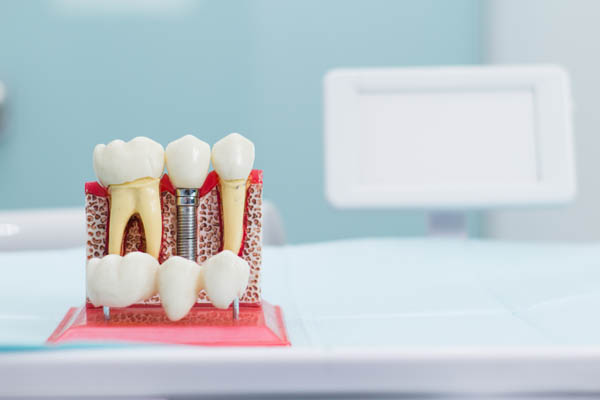Understanding the Dental Implant Process

Nearly 3 million people in the United States have a dental implant, and the number is projected to grow over the coming years. Due to their appearance, reliability, and functionality, more people are turning to implants over dentures and bridges. If you are thinking of getting dental implants, this article provides a guide on the tooth replacement process, so you know what to expect from the procedure.
Overview of the dental implant process
Dental implants involve the replacement of tooth roots with metal posts. These posts are screw-like and provide support for the artificial teeth. How the dentist completes the process depends on the number of missing teeth, the condition of the jawbone, and allergies. Patients may need to undergo multiple dental treatments so that the bone can fuse with the implant. The fusion and healing may take a while, but it is necessary in order to create a firm foundation for the new tooth.
Initial evaluation
The dentist will perform a comprehensive exam to ascertain the condition of the jawbone and the best method to use. The initial consultation typically includes x-rays, a dental health review, and taking impressions. The dental professional will discuss medical conditions and current medications. In some cases, patients may be given antibiotics before the procedure to prevent infection.
Placing the dental implant and bone grafting
If the jawbone is strong and has enough density, a bone graft procedure may not be necessary. The jawbone needs to be strong since a lot of pressure is generated when chewing, and the bone needs to be able to withstand that force and protect the implant. If extra bone material is needed to augment the jawbone, the bone material will come from another part of the body or from artificial sources.
The bone will need to heal after a bone graft before an implant can be placed. After the bone heals, the dentist will place the implant, and the bone will start to grow around it. The integration makes the implant a structural part of the jawbone. The healing process depends on the patient and may take between three to nine months.
Placing the abutment
When the implant is stable, the dentist will attach the abutment over the implant. This piece anchors the crown to the implant. This procedure is painless, although the dentist might apply local anesthesia to numb the area.
Sometimes, the abutment can be placed when the implant is inserted since it sits under the gum line. It will be visible until the crown goes over it. A healing cap will be attached to guide the healing process.
Adding the final tooth restoration
After the gums heal, the dentist will make the artificial tooth. The final crown can be screwed or cemented. If multiple teeth are missing, a bridge or denture will be used. If a removable option is used, patients will be able to remove the dental restoration for cleaning.
Ready to get a dental implant?
Replacing one or more missing teeth with dental implants is a major step. Talk to an experienced dentist to get answers to questions you might have about the procedure and to get a full overview.
Request an appointment here: https://www.cdcdentalcenter.com or call CDC Dental Center at (818) 578-2325 for an appointment in our North Hollywood office.
Check out what others are saying about our dental services on Yelp: Dental Implants in North Hollywood, CA.
Related Posts
Choosing to have dental implants means getting function and form in one restoration. These restorations can blend well with your neighboring teeth. The proper attachment will make others unaware of the procedure you had. If you want to know how dental implants blend well with your natural teeth, here are the details.The natural look of…
Curious about dental implants? Read on to learn more about the dental implant procedure. If you have one or more missing teeth, then dental implants may be a way for you to replace them long-term. This review discusses the steps that are involved with a dental implant procedure for a missing tooth to help you…
If the idea of getting dental implants intrigues you, it may be time to speak to your dentist about this treatment. You need sturdy teeth for good oral health, as well as to eat and smile normally. Implants not only improve your mouth’s function but will also look just like your natural teeth.While dental implants…
Cosmetic dentistry refers to the field in which dental professionals focus on improving the appearance, form, and function of the teeth and gums. Ultimately, the goal is to ensure that patients feel confident when smiling.Within cosmetic dentistry, there may be a number of dental professionals that patients interact with. However, first and foremost, it is…
